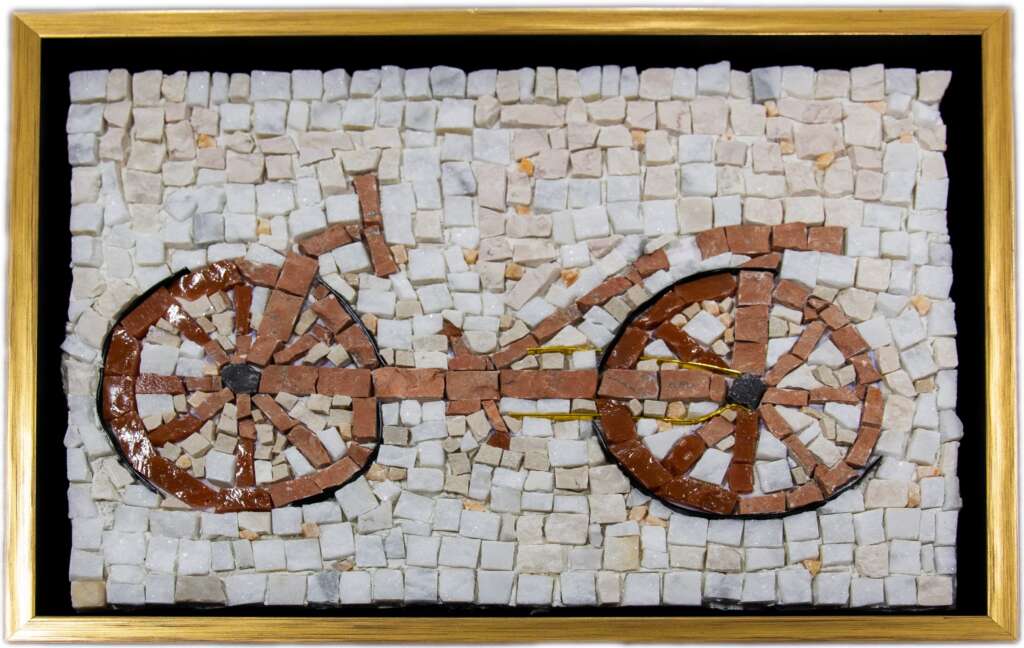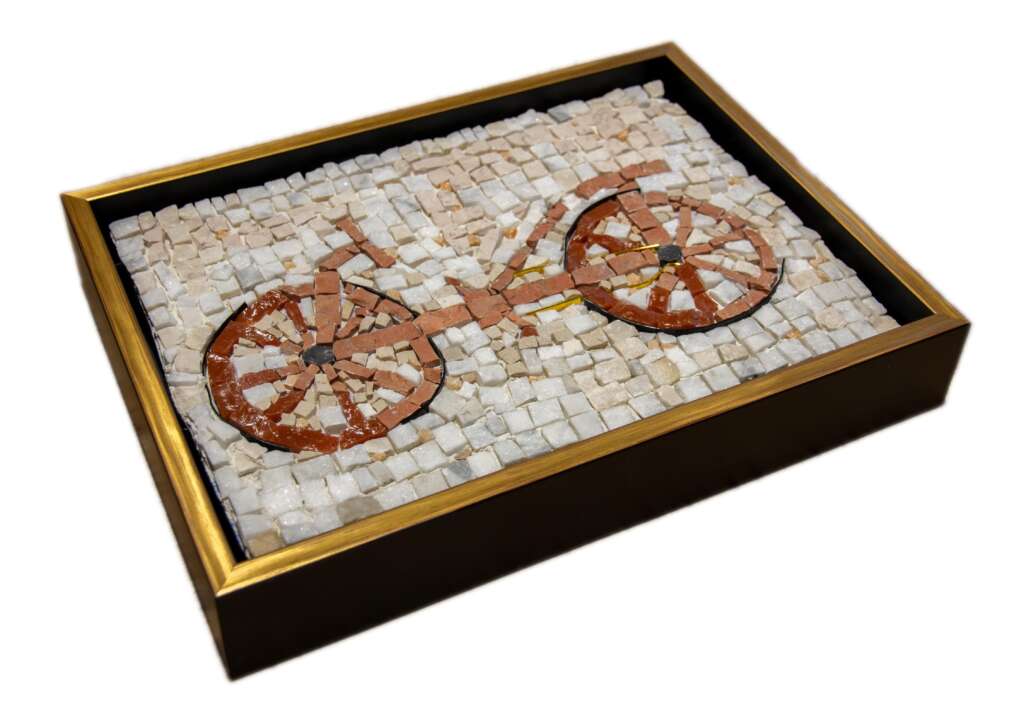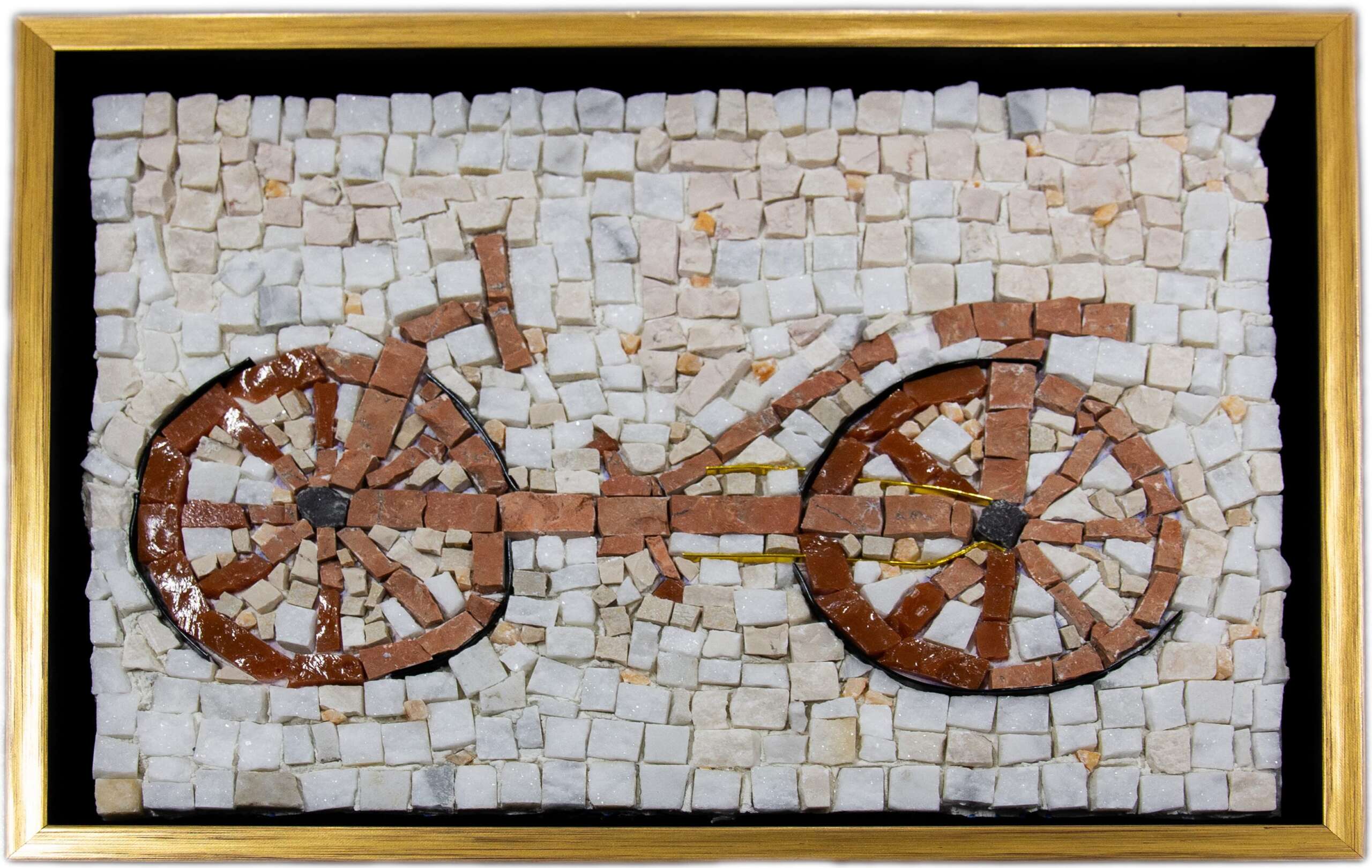Pompei miracles
In the heart of Pompeii, among the ruins and remnants of an ancient civilization frozen in time, two Italian archaeologists, Enzo Ingenuo and Josue Credulone, stood in awe. They had dedicated years to uncovering the secrets buried beneath the layers of volcanic ash that had preserved this city for centuries.

Enzo, a meticulous and thoughtful archaeologist, and Josue, an optimistic and curious soul, had stumbled upon something that sent ripples through the archaeological community. It was a discovery that challenged their understanding of the ancient worl. A mosaic that depicted a seemingly anachronistic object: a bicycle.
The mosaic was nestled within the remains of a grand villa, hidden beneath layers of ash and debris. Its vibrant colors danced under the gentle touch of their excavation brushes, revealing the intricate details of this unexpected piece of history.
Enzo scratched his head, adjusting his wire-rimmed glasses as he examined the mosaic. “A bicycle in Pompeii? This is unprecedented. Could it be a mistake?”
Josue, with a sparkle in his eye, exclaimed, “Imagine the implications! Perhaps the ancient Romans had knowledge of such advanced technology!”
Their excitement bubbled over as they meticulously documented every inch of the mosaic. The bicycle portrayed was ornate, with wheels, pedals, and a frame intricately woven into the artwork.
First presumably Leonardo now the Romans?
The discovery sparked fervent debates among scholars and historians worldwide. Some were skeptical, attributing it to an artistic anachronism or a misinterpretation. But Enzo and Josue were convinced of its authenticity.
As they delved deeper into their research, combing through historical texts and artifacts, they uncovered obscure references hinting at the existence of primitive wheeled devices in ancient times. This realization fueled their determination to validate the mosaic’s significance.
Their breakthrough attracted media attention, drawing visitors and experts eager to witness the anomaly firsthand. Amidst the scrutiny and skepticism, Enzo and Josue persevered, tirelessly defending their findings.

Months passed, and their hard work paid off when carbon dating confirmed the mosaic’s age. Finally aligning it with the Vesuvius eruption in 79 AD. It was a momentous validation of their discovery—a testament to an ancient civilization’s ingenuity.
The bicycle mosaic became a symbol of innovation and resilience, challenging perceptions of history and the capabilities of ancient societies. Enzo and Josue’s names were etched in the annals of archaeological breakthroughs. Possibly forever linked to the revelation that reshaped historical narratives.

In the shadow of Mount Vesuvius, among the ruins of Pompeii, Enzo Ingenuo and Josue Credulone had unearthed not just a mosaic but a glimpse into an ancient world’s unexpected technological prowess. A testament to the endless mysteries waiting to be revealed beneath the layers of time.



